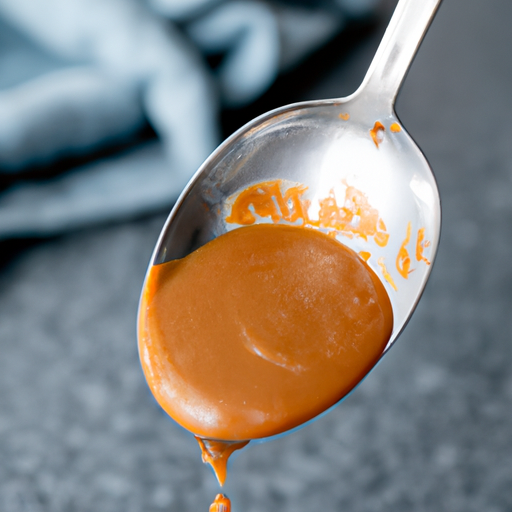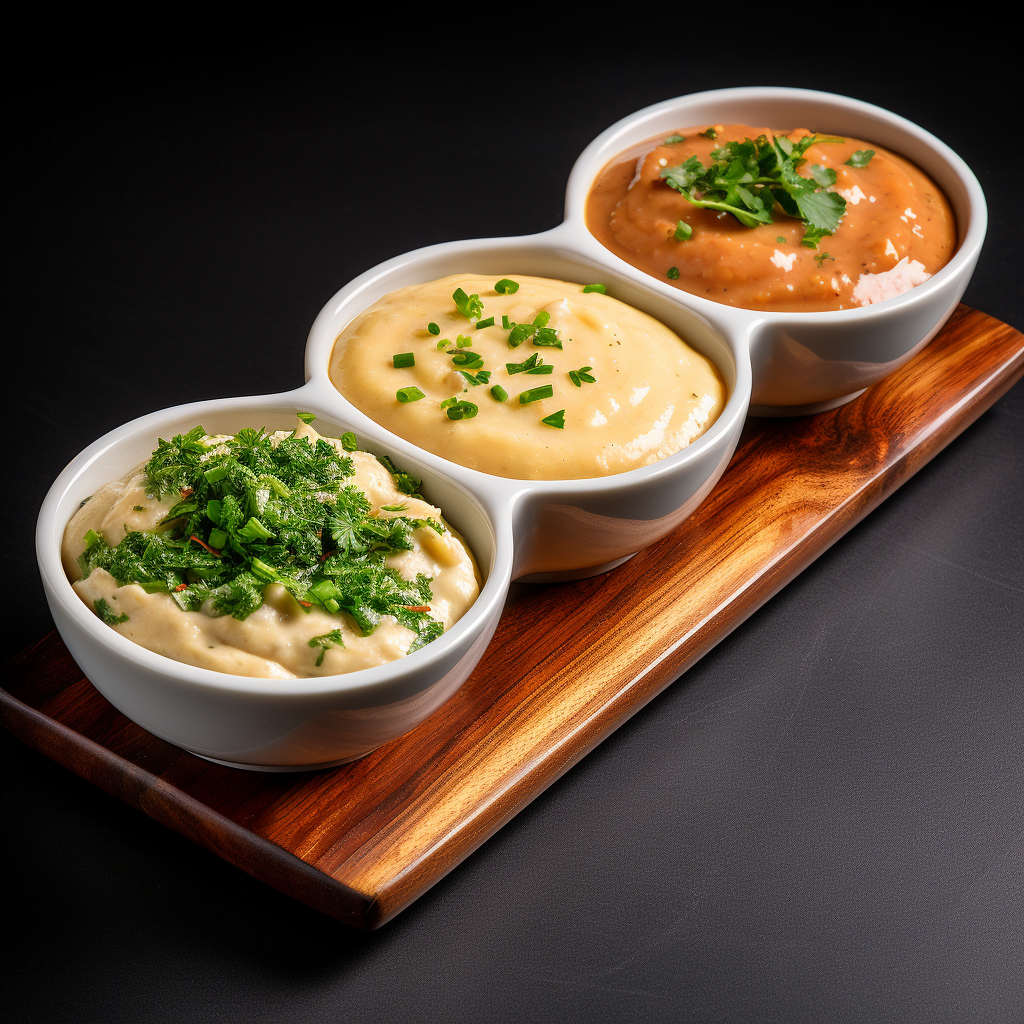Are you passionate about cooking and eager to perfect your skills in the kitchen? If so, you may have found yourself wondering, “How can I achieve the perfect consistency when making soups, sauces, and gravies?” Whether you’re a seasoned chef or just starting out, getting the right texture and thickness can make all the difference in your culinary creations. In this article, we’ll explore various cooking techniques and tips to help you achieve that ideal consistency every time you whip up a delicious batch of soup, sauce, or gravy. So grab your apron and let’s get cooking!
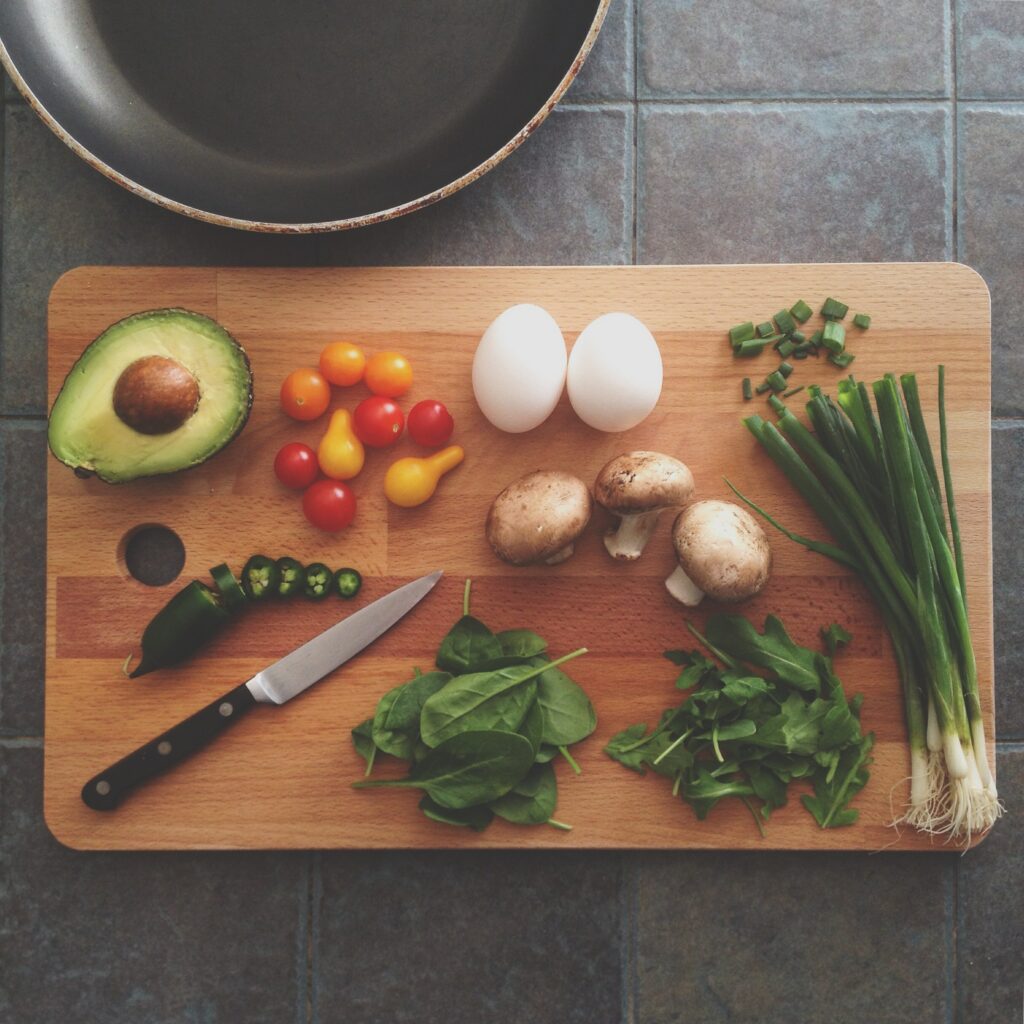
Understanding the Fundamentals
When it comes to achieving the perfect consistency in soups, sauces, and gravies, it’s essential to start with a clear understanding of the dish’s purpose. Are you aiming for a light and brothy soup, a thick and creamy sauce, or a hearty and dense gravy? Identifying the purpose will guide your ingredient choices and cooking techniques.
In addition to understanding the purpose, choosing the right ingredients is crucial for obtaining the desired consistency. Pay attention to the type and quality of ingredients you use. Fresh herbs, spices, stocks, and high-quality dairy products can make a significant difference in the final outcome.
No matter how skilled you are in the kitchen, having the necessary equipment is equally important. Make sure you have a reliable whisk, blender or food processor, strainer or sieve, and, if possible, an immersion blender or hand mixer. These tools will aid in achieving smooth textures and consistent results.
Key Techniques and Tips
Now that we have covered the fundamentals, let’s dive into some key techniques and tips that will help you master the art of achieving the perfect consistency in your soups, sauces, and gravies.
Roux: The Base for Many Soups and Sauces
Roux is a mixture of equal parts flour and fat (usually butter) used as a thickening agent in many soups and sauces. It adds depth, richness, and the desired thickness to your dish. To make a roux, melt butter in a saucepan, add flour, and cook it until it reaches a slightly golden color. This technique ensures that the flour is cooked properly and eliminates the raw taste.
Slurry: A Quick Thickening Agent
If you’re looking for a quick and easy way to thicken your soups, sauces, or gravies, a slurry comes to the rescue. A slurry is a mixture of starch (such as cornstarch or arrowroot) and a cold liquid (such as water or broth). It helps achieve a smooth and silky texture without affecting the flavor. To make a slurry, simply combine the starch with the liquid, whisk until smooth, and gradually add it to your dish while stirring constantly.
Tempering: Preventing Curdling in Dairy-based Sauces
When adding dairy products, such as milk or cream, to your sauces, it’s essential to temper them to prevent curdling. Tempering involves slowly introducing the dairy into your hot liquid while stirring constantly. This technique raises the temperature of the dairy gradually, minimizing the risk of curdling. To temper, start by adding a small amount of the hot liquid to the dairy, whisking it until combined. Then gradually add the tempered dairy mixture back into your hot dish.
Whisking: Achieving a Smooth Texture
Whisking plays a vital role in achieving a smooth texture in soups, sauces, and gravies. It helps break down any lumps, incorporates ingredients evenly, and creates a homogeneous mixture. Whether you’re blending a roux into a sauce or stirring a slurry into a soup, a reliable whisk is your best friend. Whisking should be done continuously and vigorously to ensure the desired consistency.
Simmering: Allowing Flavors to Develop
Simmering your soups, sauces, and gravies allows the flavors to develop and intensify. It also helps reduce excess liquid and thicken the dish. Make sure to keep the heat low and maintain a gentle simmer. This slow cooking process ensures that the flavors meld together harmoniously and the desired consistency is achieved.
Emulsion: Creating Creamy and Stable Sauces
Emulsions are a technique often used to create creamy and stable sauces. An emulsion is a mixture of immiscible liquids, such as oil and water, that are blended together to form a smooth and uniform sauce. Classic examples of emulsions include mayonnaise and hollandaise sauce. Achieving a successful emulsion requires patience and careful whisking. By slowly adding oil to the water-based ingredients while whisking continuously, a stable emulsion can be formed.
Achieving the Perfect Consistency
Once you have grasped the key techniques, it’s time to focus on achieving the perfect consistency in your soups, sauces, and gravies. Here are some tips to guide you:
Start with a Little, Add More Gradually
When thickening a dish, it’s always best to start with a small amount of thickening agent and gradually add more if needed. This way, you can avoid over-thickening and adjust the consistency to your preference. Remember, you can always add more, but it’s challenging to remove excess thickness once it’s already incorporated.
Use a Thickening Agent
Thickening agents can be a game-changer when it comes to achieving the perfect consistency. Popular options include flour, cornstarch, arrowroot, potato starch, gelatin, agar-agar, egg yolks, and cream. Each thickening agent has its unique properties, so consider the dish’s flavor profile and dietary restrictions before making a choice.
Reduce or Concentrate the Liquid
If your soups, sauces, or gravies are too thin, reducing or concentrating the liquid can help achieve the desired consistency. This can be done by simmering the dish uncovered, allowing the excess liquid to evaporate slowly. Keep an eye on it to prevent over-reducing and adjust according to your preference.
Strain or Blend for a Smooth Texture
Straining or blending your soups, sauces, or gravies can contribute to a smoother and more refined texture. Straining removes any solids or clumps, leaving behind a velvety consistency. On the other hand, blending with a blender or food processor creates a uniform texture by breaking down any remaining chunks or fibrous ingredients.
Balance Flavors and Adjust Seasonings
Achieving the perfect consistency goes hand in hand with balancing flavors and adjusting seasonings. Taste your dish as you go and adjust the salt, pepper, herbs, and other seasonings accordingly. The right balance of flavors can elevate the overall taste and make your soup, sauce, or gravy truly remarkable.
Troubleshooting Common Issues
Despite your best efforts, sometimes things don’t go according to plan. Don’t worry, as many common issues can be easily fixed. Let’s take a look at a few troubleshooting tips:
Thin or Watery Soups, Sauces, or Gravies
If your dish turns out to be too thin or watery, you can try adding a bit more of your chosen thickening agent. Create a slurry by mixing your thickening agent with a small amount of cold liquid, then gradually whisk it into your dish. Allow the dish to simmer for a bit longer to activate the thickening properties of the agent.
Lumpy or Clumpy Texture
Lumps or clumps in your soups, sauces, or gravies can be frustrating. If you encounter this issue, remove the lumps by using a whisk or an immersion blender. Alternatively, strain the mixture through a sieve to eliminate any undesired lumps. Remember to whisk or blend slowly and gradually to ensure a smooth texture.
Over-thickened or Gluey Results
Over-thickened or gluey results can happen if you add too much thickening agent or if you overcook the dish. To fix this, gradually add more liquid, such as broth or water, and bring the dish back to a simmer. Stir continuously to help break down the thickening agent and restore a more desirable consistency.
Uneven Thickness
Uneven thickness in your soups, sauces, or gravies can occur if the thickening agent hasn’t been evenly distributed or if it has settled at the bottom of the dish. To tackle this issue, ensure that you whisk or stir your thickening agent thoroughly into the mixture. Consistent and vigorous stirring throughout the cooking process will help ensure an even thickness.
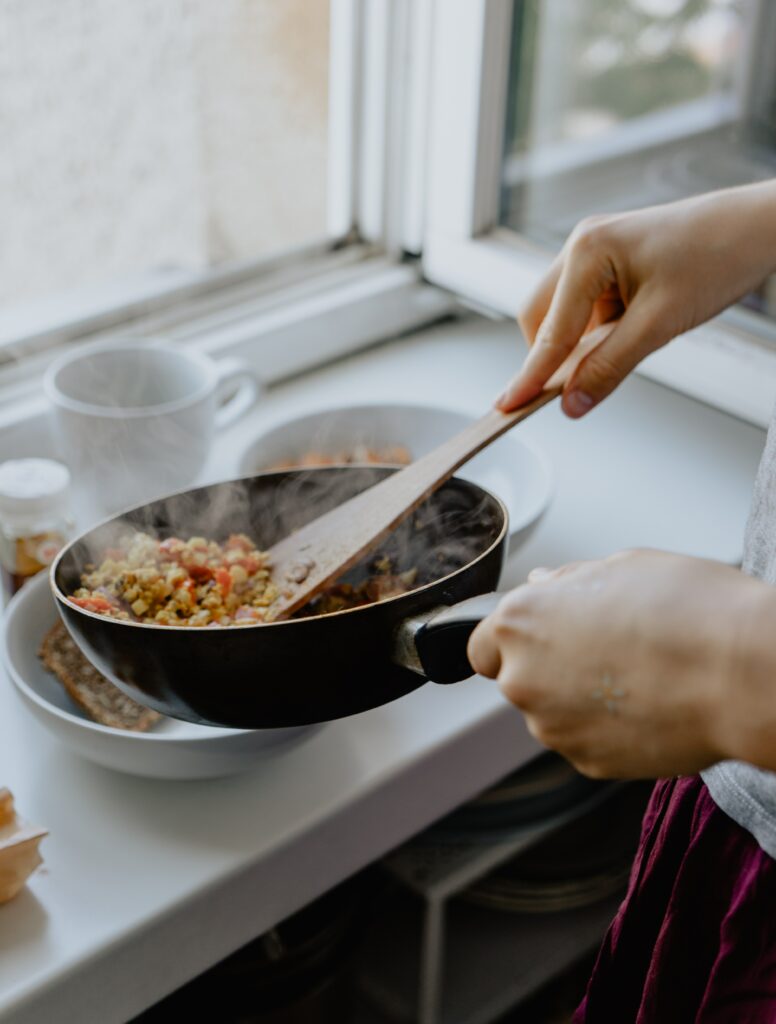
Exploring Different Thickeners
Now that we’ve covered the basics, let’s take a closer look at various thickening agents you can experiment with:
Flour
Flour is a versatile and common thickening agent. It works well for roux-based recipes and adds a subtle taste. However, be cautious as too much flour can create a starchy texture.
Cornstarch
Cornstarch is a popular gluten-free option that produces a clear and glossy thickening effect. It’s best to mix cornstarch with cold liquid before adding it to your hot dish to avoid clumping.
Arrowroot
Arrowroot is another gluten-free alternative that has a neutral taste. It creates a smooth, shiny texture and is often recommended for fruit-based sauces and soups.
Potato Starch
Potato starch is a gluten-free thickening agent derived from potatoes. It offers a creamy texture and is suitable for dishes that require refrigeration or freezing.
Gelatin or Agar-Agar
Gelatin and agar-agar are animal- and plant-based thickening agents, respectively, that are excellent options for creating set or jellied dishes. Gelatin is derived from animal collagen, whereas agar-agar is derived from seaweed.
Egg Yolks or Cream
Egg yolks and cream are natural thickeners that add richness and velvety textures to sauces and soups. However, they require careful tempering to avoid curdling or scrambling the eggs.
Matching Consistency to Dish Type
The consistency of your soups, sauces, and gravies should complement the type of dish you are preparing. Here are some guidelines to match the consistency with different dish types:
Thin and Light Consistencies for Broths and Clear Soups
Broths and clear soups are often meant to be light and refreshing. Aim for a thin and delicate consistency that allows the flavors of the ingredients to shine. Avoid heavy thickeners and focus on using gentle techniques, such as simmering and incorporating aromatic herbs and spices.
Smooth and Velvety Consistencies for Cream Soups and Sauces
Cream soups and sauces call for a smooth and velvety consistency. Achieve this by using thickening agents like roux, slurry, or cream. Straining or blending the ingredients will help create a rich texture with no lumps or fibrous bits.
Medium Consistencies for Stews, Bisques, and Gravies
Stews, bisques, and gravies benefit from a medium consistency that strikes a balance between thickness and fluidity. Using a combination of roux and reduction techniques will help achieve this desired consistency. The sauce or stew should coat the back of a spoon, ensuring that it clings to the main ingredients.
Thicker Consistencies for Purees and Dense Sauces
Purees and dense sauces, such as pasta sauces and gravies, are typically thick in nature. Use a combination of reduction, pureeing, and incorporating starches like flour or cornstarch to reach the desired thickness. These dishes should be robust and substantial, with the sauce sticking to the food.
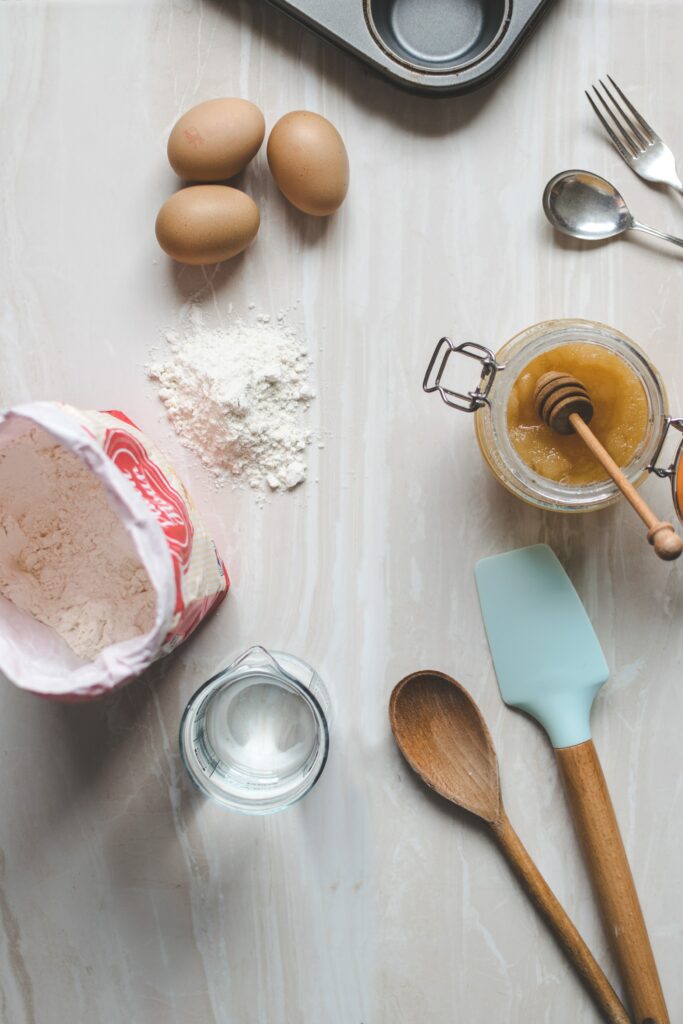
Considering Dietary Restrictions and Preferences
It’s important to consider dietary restrictions and preferences when working on achieving the perfect consistency in your soups, sauces, and gravies. Here are some options to accommodate different needs:
Gluten-Free Options
For those with gluten intolerance or sensitivity, opting for gluten-free flours, cornstarch, arrowroot, or potato starch ensures that your dishes remain safe and delicious.
Vegan and Dairy-Free Alternatives
To cater to a vegan or dairy-free diet, explore alternatives such as plant-based milks (e.g., almond milk, coconut milk, or oat milk), nut butters, non-dairy yogurt, and vegan cheese substitutes. These options can offer similar textures and flavors while maintaining the desired consistency.
Low-Fat and Healthy Choices
For a healthier twist, consider reducing or substituting high-fat ingredients like cream or butter with low-fat alternatives such as Greek yogurt, vegetable broth, or a combination of pureed vegetables. This allows you to achieve a lighter consistency without compromising flavor.
Timing and Cooking Techniques
Timing and cooking techniques play an essential role in achieving the perfect consistency. Here are some tips to keep in mind:
Simmering for Flavor Infusion
Simmering your soups, sauces, and gravies over low heat for an extended period enhances the flavors and allows the ingredients to meld together. This slow cooking process extracts the savory essence and creates a more profound and well-rounded taste.
Reduction for Concentrated Flavors and Thickness
Reducing your dish involves simmering it uncovered to allow the excess liquid to evaporate. This technique concentrates the flavors and naturally thickens the dish. Keep an eye on the reduction process to prevent overcooking and excessively thickening your soups, sauces, or gravies.
Cooling and Reheating to Adjust Consistency
In some cases, the consistency of your dish may change after it has cooled. If you find that your soup, sauce, or gravy becomes too thick upon cooling, you can adjust the consistency by reheating it and gradually incorporating additional liquid. On the other hand, if the dish is too thin after cooling, you can use a thickening agent or reduction techniques to regain the desired consistency.
Refrigeration and Freezing for Future Use
If you prepare a large amount of soup, sauce, or gravy and want to maintain its consistency for future use, consider refrigerating or freezing it. Properly storing your dish in airtight containers or freezer bags will preserve the flavors and consistency. However, keep in mind that some thickening agents, such as starches, may break down or lose their thickening properties upon freezing and thawing.
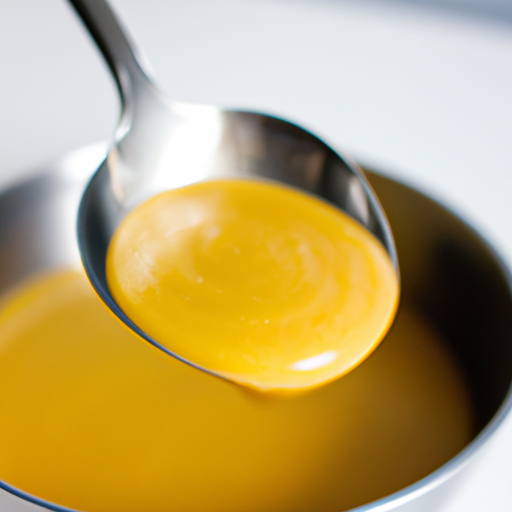
Using the Right Tools and Equipment
Having the right tools and equipment can significantly contribute to achieving the perfect consistency in your soups, sauces, and gravies. Here are some essential items to have in your kitchen:
Whisk
A whisk is an indispensable tool for achieving smooth textures, breaking down lumps, and evenly incorporating ingredients. Opt for a sturdy whisk with a comfortable handle for ease of use. Choose whisk sizes appropriate for your dish’s volume, ranging from small whisks for sauces to larger ones for soups.
Blender or Food Processor
A blender or food processor is instrumental when it comes to achieving a silky texture in soups, sauces, or gravies. It helps break down ingredients and ensures a homogeneous consistency. Invest in a high-quality blender or food processor that can handle both large and small quantities.
Strainer or Sieve
A strainer or sieve is useful for removing any unwanted solids or lumps from your soups, sauces, or gravies. It creates a smooth and refined texture, especially when combined with other techniques like blending or whisking. Choose a fine-mesh strainer or sieve to capture any fine particles or fibers.
Immersion Blender or Hand Mixer
An immersion blender or hand mixer is a convenient alternative to a traditional blender or food processor, especially when blending hot liquids directly in the pot. These handheld tools allow for swift and efficient blending without the need to transfer the mixture to a separate container.
Experimenting with Flavors and Ingredients
Achieving the perfect consistency in your soups, sauces, and gravies doesn’t mean you need to settle for a bland or monotonous taste. Experimenting with flavors and ingredients can create a delightful culinary experience. Here are some ideas to get you started:
Adding Herbs and Spices
Herbs and spices can transform your soups, sauces, and gravies, elevating their taste and aroma. Experiment with different combinations to create unique flavors. Fresh herbs like basil, thyme, parsley, and spices such as cumin, paprika, turmeric, or cinnamon can add depth and complexity to your dishes.
Incorporating Different Liquids
Instead of using just water or broth, consider incorporating different liquids to enhance the flavors of your soups, sauces, or gravies. Wine, citrus juices, coconut milk, or even tea can bring a new dimension to your dish. Be mindful of their flavors and how they interact with the other ingredients.
Enhancing Umami with Soy Sauce or Worcestershire Sauce
Umami is the fifth taste sensation that adds depth and savory notes to your soups, sauces, and gravies. Enhance umami flavors by adding soy sauce or Worcestershire sauce. These ingredients have rich savory qualities and can balance and intensify the overall taste of your dish.
Balancing Sweetness with Acidic Ingredients
Finding the right balance between sweet and acidic flavors is crucial for creating well-rounded soups, sauces, and gravies. Incorporate acidic ingredients such as lemon juice, vinegar, or tomatoes to cut through the richness and sweetness in your dish. This balance creates a harmonious blend of flavors.
By understanding the fundamentals, mastering key techniques, and incorporating your own creativity, you can achieve the perfect consistency in your soups, sauces, and gravies. Remember to experiment, taste, and adjust along the way to cater to your personal preferences and create culinary masterpieces that will delight your taste buds. Happy cooking!
